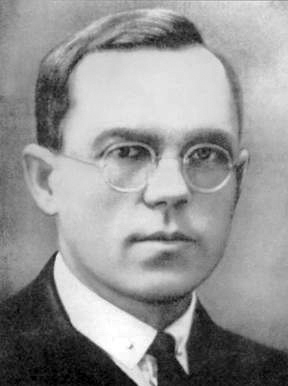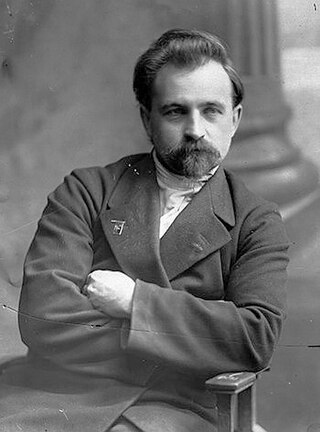The ten years 1917–1927 saw a radical transformation of the Russian Empire into a socialist state, the Soviet Union. Soviet Russia covers 1917–1922 and Soviet Union covers the years 1922 to 1991. After the Russian Civil War (1917–1923), the Bolsheviks took control. They were dedicated to a version of Marxism developed by Vladimir Lenin. It promised the workers would rise, destroy capitalism, and create a socialist society under the leadership of the Communist Party of the Soviet Union. The awkward problem, regarding Marxist revolutionary theory, was the small proletariat, in an overwhelmingly peasant society with limited industry and a very small middle class. Following the February Revolution in 1917 that deposed Nicholas II of Russia, a short-lived provisional government gave way to Bolsheviks in the October Revolution. The Bolshevik Party was renamed the Russian Communist Party (RCP).

The five-year plans for the development of the national economy of the Union of Soviet Socialist Republics (USSR) consisted of a series of nationwide centralized economic plans in the Soviet Union, beginning in the late 1920s. The Soviet state planning committee Gosplan developed these plans based on the theory of the productive forces that formed part of the ideology of the Communist Party for development of the Soviet economy. Fulfilling the current plan became the watchword of Soviet bureaucracy.

An index of articles related to the former nation known as the Soviet Union. It covers the Soviet revolutionary period until the dissolution of the Soviet Union. This list includes topics, events, persons and other items of national significance within the Soviet Union. It does not include places within the Soviet Union, unless the place is associated with an event of national significance. This index also does not contain items related to Soviet Military History.

The Soviet Union introduced forced collectivization of its agricultural sector between 1928 and 1940 during the ascension of Joseph Stalin. It began during and was part of the first five-year plan. The policy aimed to integrate individual landholdings and labour into nominally collectively-controlled and openly or directly state-controlled farms: Kolkhozes and Sovkhozes accordingly. The Soviet leadership confidently expected that the replacement of individual peasant farms by collective ones would immediately increase the food supply for the urban population, the supply of raw materials for the processing industry, and agricultural exports via state-imposed quotas on individuals working on collective farms. Planners regarded collectivization as the solution to the crisis of agricultural distribution that had developed from 1927. This problem became more acute as the Soviet Union pressed ahead with its ambitious industrialization program, meaning that more food would be needed to keep up with urban demand.

Nikolai Dmitriyevich Kondratiev was a Russian Soviet economist and proponent of the New Economic Policy (NEP) best known for the business cycle theory known as Kondratiev waves.

Agriculture in the Soviet Union was mostly collectivized, with some limited cultivation of private plots. It is often viewed as one of the more inefficient sectors of the economy of the Soviet Union. A number of food taxes were introduced in the early Soviet period despite the Decree on Land that immediately followed the October Revolution. The forced collectivization and class war against "kulaks" under Stalinism greatly disrupted farm output in the 1920s and 1930s, contributing to the Soviet famine of 1932–33. A system of state and collective farms, known as sovkhozes and kolkhozes, respectively, placed the rural population in a system intended to be unprecedentedly productive and fair but which turned out to be chronically inefficient and lacking in fairness. Under the administrations of Nikita Khrushchev, Leonid Brezhnev, and Mikhail Gorbachev, many reforms were enacted as attempts to defray the inefficiencies of the Stalinist agricultural system. However, Marxist–Leninist ideology did not allow for any substantial amount of market mechanism to coexist alongside central planning, so the private plot fraction of Soviet agriculture, which was its most productive, remained confined to a limited role. Throughout its later decades the Soviet Union never stopped using substantial portions of the precious metals mined each year in Siberia to pay for grain imports, which has been taken by various authors as an economic indicator showing that the country's agriculture was never as successful as it ought to have been. The real numbers, however, were treated as state secrets at the time, so accurate analysis of the sector's performance was limited outside the USSR and nearly impossible to assemble within its borders. However, Soviet citizens as consumers were familiar with the fact that foods, especially meats, were often noticeably scarce, to the point that not lack of money so much as lack of things to buy with it was the limiting factor in their standard of living.

The first five-year plan of the Union of Soviet Socialist Republics (USSR) was a list of economic goals, implemented by Communist Party General Secretary Joseph Stalin, based on his policy of socialism in one country. Leon Trotsky had delivered a joint report to the April Plenum of the Central Committee in 1926 which proposed a program for national industrialisation and the replacement of annual plans with five-year plans. His proposals were rejected by the Central Committee majority which was controlled by the troika and derided by Stalin at the time. Stalin's version of the five-year plan was implemented in 1928 and took effect until 1932.
The Declaration of 46 was a secret letter sent by a group of 46 leading Soviet communists to the Politburo of the Central Committee of the Communist Party of the Soviet Union on 15 October 1923. The declaration followed Leon Trotsky's letter, which was sent to the Politburo on 8 October and expressed similar concerns and thus laying the foundation for the Left Opposition within the Communist Party of the Soviet Union later that year. The signatories had pointed to issues with the party ban and also called for a review of the factional ban introduced in the Tenth Congress through a party conference. The vast majority of the signatories were executed during the Great Purge.
The Council of Labor and Defense, first established as the Council of Workers' and Peasants' Defense in November 1918, was an agency responsible for the central management of the economy and production of military materiel in the Russian Socialist Federative Soviet Republic and later in the Soviet Union. During the Russian Civil War of 1917-1922 the council served as an emergency "national economic cabinet", issuing emergency decrees in an effort to sustain industrial production for the Red Army amidst economic collapse. In 1920–23 it existed on the rights of the commission of the Russian Sovnarkom and after 1923 of the Soviet Council of People's Commissariats. The Central Executive Committee of the Soviet Union abolished the council on 28 April 1937. Its functions were split between the Economic Council of the Council of People's Commissars of the Soviet Union and the Defense Committee of the Council of People's Commissars of the Soviet Union.

Industrialization in the Soviet Union was a process of accelerated building-up of the industrial potential of the Soviet Union to reduce the economy's lag behind the developed capitalist states, which was carried out from May 1929 to June 1941.
The Soviet famine of 1946–1947 was a major famine in the Soviet Union that lasted from mid-1946 to the winter of 1947 to 1948. It was also the last major famine in Soviet history.
Primitive socialist accumulation, sometimes referred to as the socialist accumulation, was a concept put forth in the early Soviet Union during the period of the New Economic Policy. It was developed as a counterpart to the process of the primitive accumulation of capital that took place during the early stages and development of capitalist economies. Because the Soviet economy was underdeveloped and largely agrarian in nature, the Soviet Union would have to be the agent of primitive capital accumulation to rapidly develop the economy. The concept was proposed originally as a means to industrialize the Russian economy through extracting surplus from the peasantry to finance the industrial sector.

Hyperinflation in early Soviet Russia connotes a seven-year period of uncontrollable spiraling inflation in the early Soviet Union, running from the earliest days of the Bolshevik Revolution in November 1917 to the reestablishment of the gold standard with the introduction of the chervonets as part of the New Economic Policy. The inflationary crisis effectively ended in March 1924 with the introduction of the so-called "gold ruble" as the country's standard currency.

The Workers' Truth was a Russian socialist opposition group founded in 1921. They published a newspaper with the same name, Workers' Truth, which first appeared in September 1921.

Yevgeni Alekseyevich Preobrazhensky was a Russian revolutionary, Soviet politician, and Marxist economist. His main contribution to Marxist theory is the concept of "primitive socialist accumulation", which holds that industrialization in an underdeveloped and agrarian economy such as Russia's in 1917 must rely on the squeezing of agriculture, for example by the socialist state buying agricultural goods at low prices and selling back industrial goods at high prices.

Collective farming and communal farming are various types of "agricultural production in which multiple farmers run their holdings as a joint enterprise". There are two broad types of communal farms: agricultural cooperatives, in which member-owners jointly engage in farming activities as a collective; and state farms, which are owned and directly run by a centralized government. The process by which farmland is aggregated is called collectivization. In some countries, there have been both state-run and cooperative-run variants. For example, the Soviet Union had both kolkhozy and sovkhozy.

The New Economic Policy (NEP) was an economic policy of the Soviet Union proposed by Vladimir Lenin in 1921 as a temporary expedient. Lenin characterized the NEP in 1922 as an economic system that would include "a free market and capitalism, both subject to state control", while socialized state enterprises would operate on "a profit basis".

War communism or military communism was the economic and political system that existed in Soviet Russia during the Russian Civil War from 1918 to 1921. War communism began in June 1918, enforced by the Supreme Economic Council, known as the Vesenkha. It ended on 21 March 1921, with the beginning of the New Economic Policy, which lasted until 1928. The system has often been described as simple authoritarian control by the ruling and military castes to maintain power and control in the Soviet regions, rather than any coherent political ideology. The Soviet propaganda justified it by claiming that the Bolsheviks adopted this policy with the goal of keeping towns and the Red Army stocked with food and weapons since circumstances dictated new economic measures.

The economy of the Soviet Union was based on state ownership of the means of production, collective farming, and industrial manufacturing. An administrative-command system managed a distinctive form of central planning. The Soviet economy was second only to the United States and was characterized by state control of investment, prices, a dependence on natural resources, lack of consumer goods, little foreign trade, public ownership of industrial assets, macroeconomic stability, low unemployment and high job security.
The Soviet grain procurement crisis of 1928, sometimes referred to as "the crisis of NEP," was a pivotal economic event which took place in the Soviet Union beginning in January 1928 during which the quantities of wheat, rye, and other cereal crops made available for purchase by the state fell to levels regarded by planners as inadequate to support the needs of the country's urban population. Failure of the state to make successful use of the price system to generate sufficient grain sales was met with a regimen of increasingly harsh administrative sanctions against the Soviet peasantry. The state of national emergency which followed led to the termination of the New Economic Policy and spurred a move towards the collectivization of agriculture in 1929.










